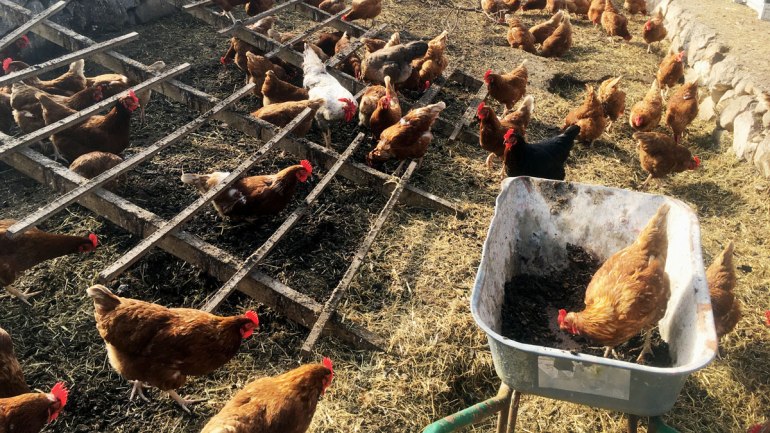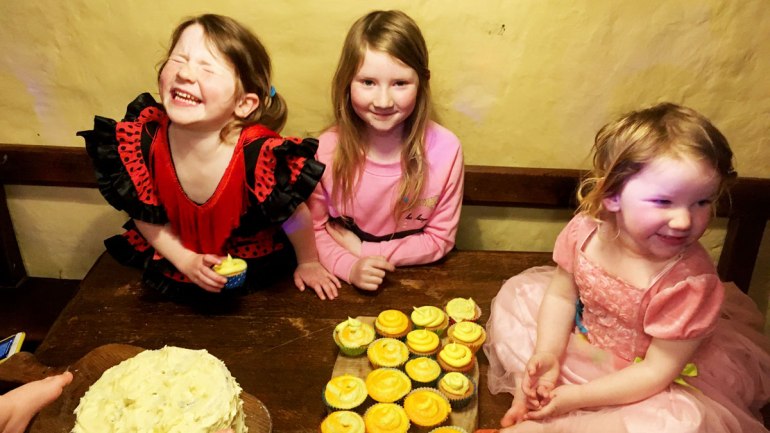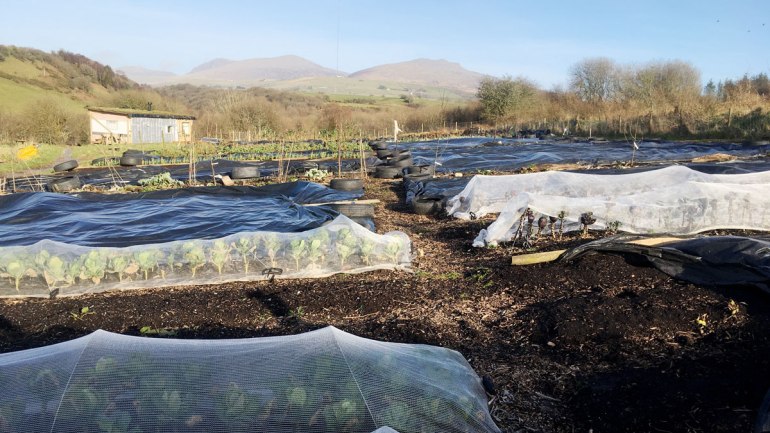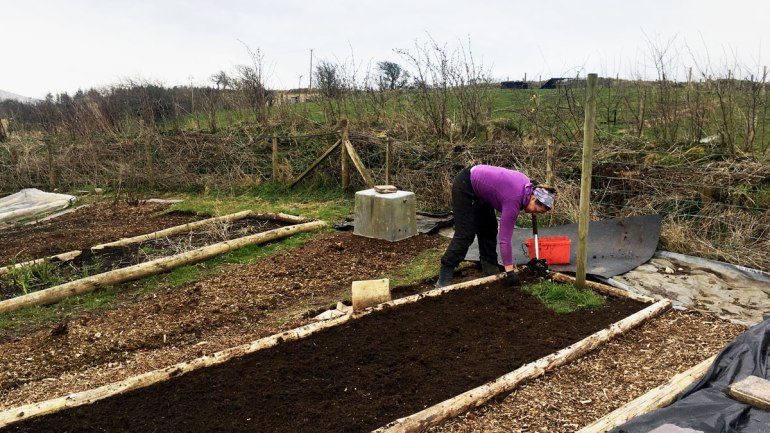This week I took responsibility for feeding the chickens, collecting their eggs and boxing them up for sale. I also started seed sowing for the market/kitchen gardens and learnt all about using a drill correctly.
Taking care of chickens
A very protective rooster and curious hens as I feed them and collect eggs (c) Rianne Mason
I’ve been getting to know the chickens a lot this week and experiencing the drama of a closed water valve, an angry rooster and the sight of a dead hen. “When you have livestock, you have deadstock” said Stefan – and I couldn’t really argue with that.
Drama aside I now have a regular routine of feeding them at 7am and 12.30pm then collecting their eggs at 3pm. In the morning I pour the feed out in one long line because the chickens literally have a ‘pecking order’ and a hierarchy needs to be maintained. I also check that the water is good, that there’s shells available, whether any stray eggs have been laid and I open the access to the laying area (closing it at night so it keeps reasonably clean).
When collecting the eggs they’re sorted into ones that are a bit weird looking (which we eat), ones that need a bit of a clean and ones ready to sell. We keep a daily count and record the number of broken ones – which are thrown back to the chickens to eat. On Wednesdays they all get boxed up for selling locally.

Chickens enjoying the leaf compost (c) Rianne Mason
I gave the chickens some extra love this week by cleaning their laying area out and adding some leaf compost to their home – giving them plenty of free worms to discover.
I’ve learnt that roosters really are protective of their ladies and that eggs come in all kinds of shapes and patterns that we never see in the supermarket. I’ve also learnt a little bit about pasture-raised vs free-range hens.
What’s the difference between pasture-raised and free-range?

I had to ask this question as we were re-designing the label for the eggs here at Henbant. I always look for ‘free-range’ when I buy eggs in the shop and I could barely see it on the box, but Matt deliberately highlighted ‘pasture-fed’ instead. Why? Well I’ll try to explain…
Free-range chickens have a standard where they’re free to roam outdoors for at least part of the day, and that amount of space available can still be fairly small. Pasture-raised hens are able to live much more like they would naturally – with the ability to freely roam open pasture, peck and scratch. This means that the soil is improved and their diet is partially supplemented with whatever insects/worms they find outdoors (making a very tasty egg).
This week we moved the fence parameters so that the chickens had a new area to graze and they soon got to work scratching away at the grass and doing what chickens do best – being a chicken.
Sowing seeds for the market garden and kitchen garden

There’s a complex plan for the market garden and every week we check what seeds need to be sown and how many we need for the ideal yield when we harvest for the veg boxes. This week I helped Tina sowing chives, kale and parsley for the market garden (used for the community veg box scheme) and the kitchen garden (which we use for our own food).
Sowing seeds and watching them germinate is easily my favourite part of gardening – it always feels like pure magic when those first shoots peek through the soil.
Learning about no-dig beds
No-dig beds in the Henbant market garden and kitchen garden (c) Rianne Mason
After a couple of blustery days here in Wales the tarpaulin needed re-positioning over the no-dig beds in the market garden. This gave me a chance to learn all about the benefits of a no-dig system, both for the soil and the gardener.
The general idea is that instead of constantly digging out weeds we chop their tops off (leaving the roots in the soil) and starve them of light by covering them (e.g. with tarpauline, carboard, bark). Eventually the weeds stop and a beautiful rich, crumbly soil is left behind. You can still pull out the small weedlings as they appear but by leaving the soil un-disturbed the seeds aren’t being bought to the surface – which is what creates a never-ending battle between gardener and weeds.
I have to say the soil in these beds is the best I’ve seen, smelt and felt. The no-dig process is much closer to how soil is built naturally (think of a forest floor) and nature knows what it’s doing, so I think we should learn from the master and stop breaking our backs for weeds.
Adding the finishing touches to the roundhouse
DIY and house-keeping at the roundhouse with Olivia (c) Rianne Mason
Did you know that drills have a ‘hammer mode’ that isn’t really suitable for normal planks of wood? Well, after a couple of ‘stripped’ screws I now know this about drills. Olivia and I took to adding a roof to the entrance of the outdoor shower at the roundhouse, stapling over a sheet of PVC and then covering it with turf. It was pretty cool climbing the natural roof to build another natural roof and the whole process only had the damages of 1 drill bit (sorry Matt).
Celebrating Nel’s birthday

With the sheer amount of cakes that are baked here at Henbant it seems that we’re always celebrating something, but this week was extra special because it was Nel’s 8th birthday. We all gathered in the living room to sing Happy Birthday, eat cake and watch ‘The Greatest Showman’ (which is actually all about permaculture if you listen to the songs closely – who knew!?).










Leave a comment